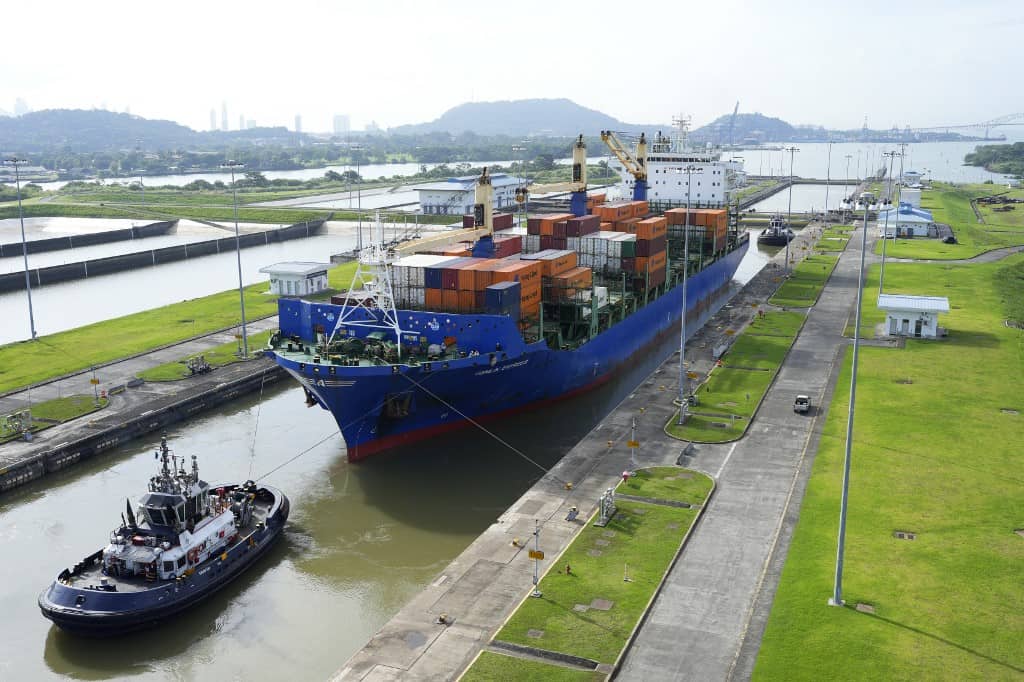The Panama Canal celebrates 110 years of operation on Thursday, and there are many curiosities and anecdotes related to the colossal interoceanic route, built by the United States after the French debacle. Here are five notable facts:
1.The Canal Gave Birth to a Country
Panama’s independence from Colombia in 1903 is linked to the interoceanic canal. After the failure of French Count Ferdinand de Lesseps to open a canal in the isthmus, the United States promoted the separation of the province of Panama and signed a treaty with the nascent country that ceded lands and waters in perpetuity to build it.
After 10 years of construction and an investment of 380 million dollars of the time, the canal was inaugurated on August 15, 1914, with the crossing of the steamship Ancón. Behind were 25,000 deaths from diseases and accidents during French and American construction.
In the French stage, in 1887, the later famous painter Paul Gauguin almost lost his life working on the construction works.
2. A State Within Another
Washington established the “Canal Zone,” an enclave where the American flag flew with its own military bases, police, and justice system. This gave rise to decades of Panamanian claims to reunify the country and take control of the route.
“The canal in these 110 years has represented many things. In its original construction: ingenuity, perseverance, and sacrifice; then a great struggle to recover a single national territory and a single flag,” said Ilya Espino, the route’s deputy administrator.
In 1977, Panamanian nationalist leader Omar Torrijos and U.S. President Jimmy Carter signed the treaties that allowed the transfer of the canal to Panama in 1999.
3. Shortcut with Elevators
The 80 km route that connects the Pacific Ocean with the Caribbean Sea works with locks, a kind of elevator that raises ships 26 meters to reach the level of Lake Gatún and cross it. Another set of locks makes them descend to sea level to continue their route.
The canal transformed navigation and world trade. Ships pass from one ocean to another in about 8 hours without having to go to Cape Horn. From New York to San Francisco, a ship saves 20,300 km.
In 110 years, it has only closed in 1915 due to a landslide and in 1989 when Panama was invaded by the United States. In 2010, it stopped for 17 hours due to flooding. “We overcame a Covid pandemic without closing a single day to world trade,” Espino highlights.
4. Golden Goose
6% of world maritime trade circulates through the canal. It also connects more than 1,900 ports in 170 countries. Its largest users are the United States, China, Japan, and South Korea.
At the beginning of the 21st century, it had already become small and between 2009 and 2016 it was expanded. Today, neopanamax ships can pass, with dimensions of 49 meters beam by 366 meters length, equivalent to almost four football fields.
The expansion “has allowed accommodating ships of up to almost 18,000 containers,” explains Jorge Quijano, former administrator of the route. The canal contributes 6% of Panama’s GDP and since 2000 has delivered more than 25.7 billion dollars to the treasury.
In fiscal year 2023, when more than 14,000 ships crossed it with 511 million tons of cargo, it contributed a record 2.544 billion dollars, much more than in 85 years of American administration (1.878 billion). But Panama’s golden goose now faces the threat of drought.
5. The Freshwater Canal
Unlike the Suez Canal, Panama’s operates with freshwater. “It uses two and a half times the amount used by a city the size of New York,” illustrated the route’s administrator, Ricaurte Vásquez. For each ship, about 200 million liters of freshwater are poured into the sea.
In 2023, alarms went off when drought forced the reduction of daily ship traffic from 38 to 22. This year it’s recovering. “Many countries have oil or gas, we have water and nature is playing a trick on us that we didn’t expect,” said Jorge Pitti, operations manager of the Cocolí lock on the Pacific side of the route.
Authorities are studying building a reservoir on a nearby river to supply the canal, but more than 2,000 people would have to be relocated. “The canal has to recover its service reliability. That is only achieved by securing new water sources,” Quijano warned.






